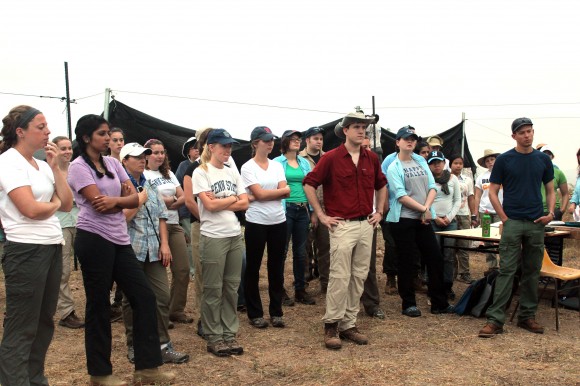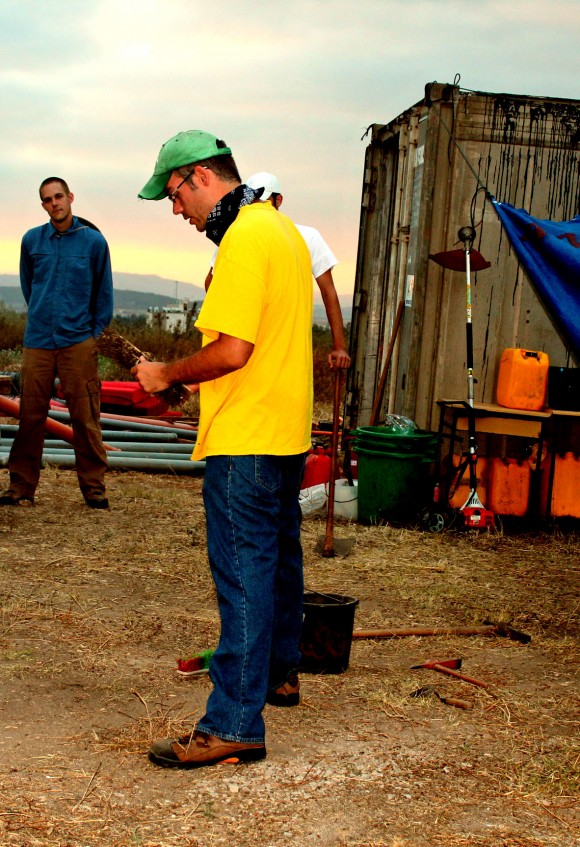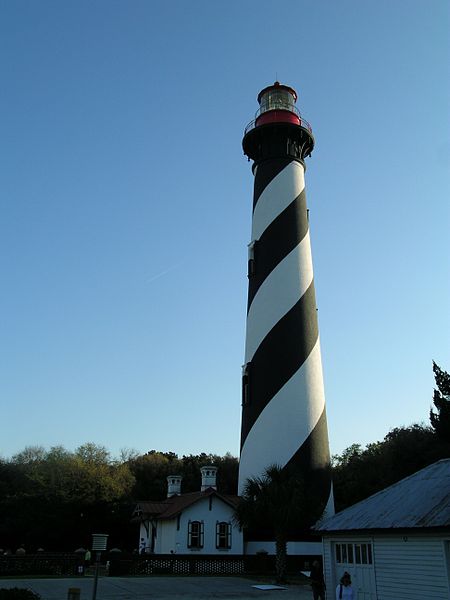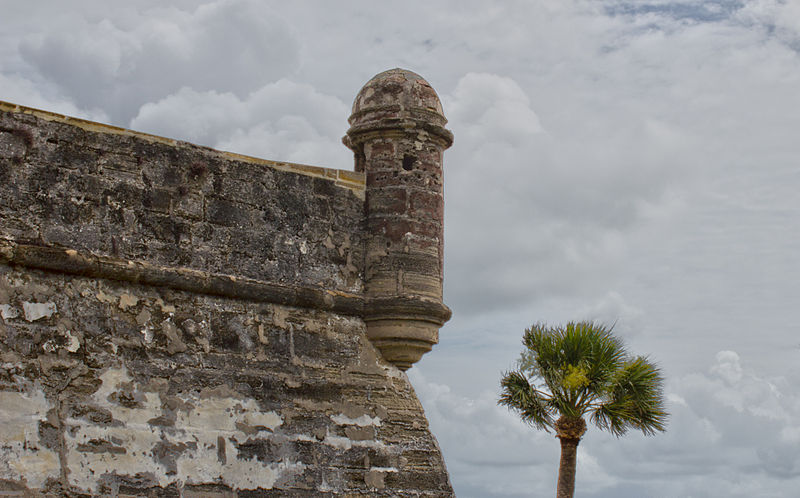The bus was late yesterday. When it did arrive, the driver was a bit upset. A woman in a lefthand turning lane had suddenly gone straight rather than turn and he had had to slam on the brakes. There was a little damage to the driver’s side of the bus, but nothing much. They exchanged insurance info and he asked what happened. She said the GPS told her to go straight. Israel or the U.S. some things are the same.
We started digging yesterday. 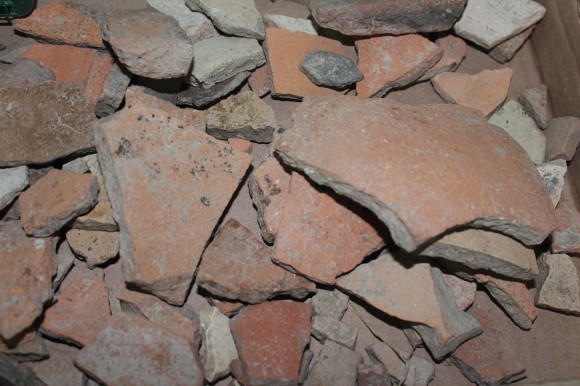 Pulling up lots of pottery. Not surprising as a second name of Tel Akko is Tel of Sherds. The place is just covered with them and they are mixed in with all the dirt. I’ve been hauling buckets and screening dirt. A two-handled screen atop a wheelbarrow gets shaken to remove all the loose dirt. Then the diggers sort through what is left for pottery, animal bone, shells, iron slag and perhaps something cool. What could be cool? Loom weights – little ceramic globs with holes in them that are used in weaving, iron projectile points, highly polished and painted Greek pottery, a carved ivory figure would all be cool and all have been found on the Tel so far, but not in the screens.
Pulling up lots of pottery. Not surprising as a second name of Tel Akko is Tel of Sherds. The place is just covered with them and they are mixed in with all the dirt. I’ve been hauling buckets and screening dirt. A two-handled screen atop a wheelbarrow gets shaken to remove all the loose dirt. Then the diggers sort through what is left for pottery, animal bone, shells, iron slag and perhaps something cool. What could be cool? Loom weights – little ceramic globs with holes in them that are used in weaving, iron projectile points, highly polished and painted Greek pottery, a carved ivory figure would all be cool and all have been found on the Tel so far, but not in the screens.
What do I find? Broken pieces of pottery ranging in size from less than half an inch to hand sized. Shells ranging from tiny snail shells to large, 2-inch, scallop shells to spiny dye murex shells. These are the ones that the “royal purple dye” comes from. And more sherds. Sometimes little pieces of Greek looking pottery, sometimes a handle, but so far, nothing of much note. But I have faith. Everything eventually ends up in the screens. Something really cool will pop up, appear, emerge.
Yesterday was unusual in another way. After dinner, one of the staff, Nick Pumphrey, Claremont Graduate University, successfully defended his dissertation. His advisor is here and the defense took place via Skype. So a new Ph.D. takes his place in the Academy today. He doesn’t look any different than yesterday, but his wife looks much happier.

